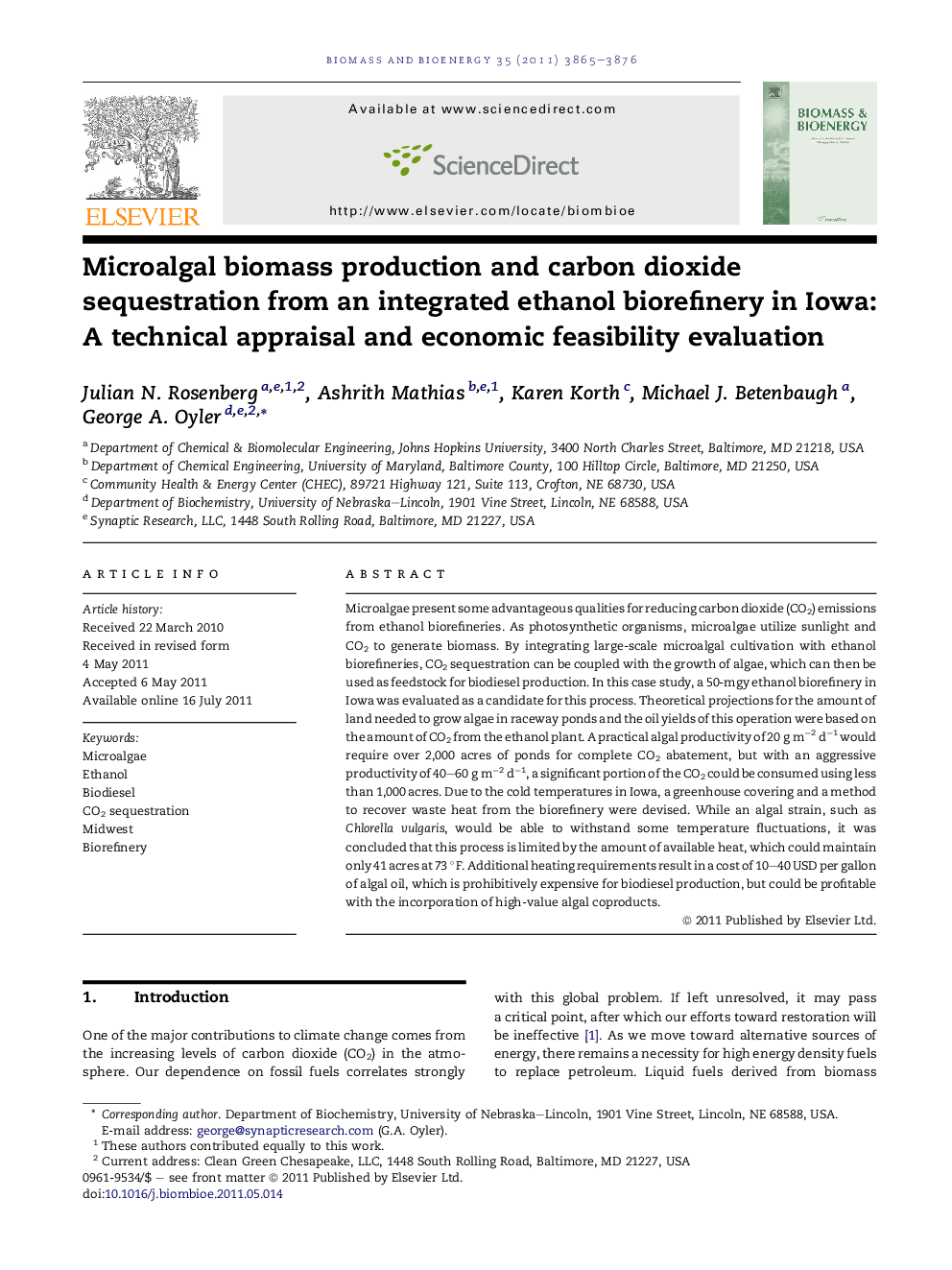| کد مقاله | کد نشریه | سال انتشار | مقاله انگلیسی | نسخه تمام متن |
|---|---|---|---|---|
| 677673 | 888621 | 2011 | 12 صفحه PDF | دانلود رایگان |

Microalgae present some advantageous qualities for reducing carbon dioxide (CO2) emissions from ethanol biorefineries. As photosynthetic organisms, microalgae utilize sunlight and CO2 to generate biomass. By integrating large-scale microalgal cultivation with ethanol biorefineries, CO2 sequestration can be coupled with the growth of algae, which can then be used as feedstock for biodiesel production. In this case study, a 50-mgy ethanol biorefinery in Iowa was evaluated as a candidate for this process. Theoretical projections for the amount of land needed to grow algae in raceway ponds and the oil yields of this operation were based on the amount of CO2 from the ethanol plant. A practical algal productivity of 20 g m−2 d−1 would require over 2,000 acres of ponds for complete CO2 abatement, but with an aggressive productivity of 40–60 g m−2 d−1, a significant portion of the CO2 could be consumed using less than 1,000 acres. Due to the cold temperatures in Iowa, a greenhouse covering and a method to recover waste heat from the biorefinery were devised. While an algal strain, such as Chlorella vulgaris, would be able to withstand some temperature fluctuations, it was concluded that this process is limited by the amount of available heat, which could maintain only 41 acres at 73 °F. Additional heating requirements result in a cost of 10–40 USD per gallon of algal oil, which is prohibitively expensive for biodiesel production, but could be profitable with the incorporation of high-value algal coproducts.
► We assess the feasibility of integrated algal cultivation coupled with a 50-mgy ethanol biorefinery in Iowa.
► An integrated culture system with heat and CO2 transfer from biorefinery to covered ponds is modeled.
► Theoretical land requirements, operating costs, and biodiesel yields are projected.
► Algal biodiesel production, constrained by available heat and land, is not yet economical in Iowa.
Journal: Biomass and Bioenergy - Volume 35, Issue 9, October 2011, Pages 3865–3876